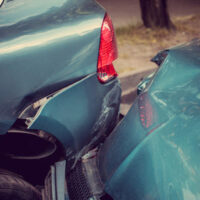Local Roads are Safer Than State Owned Roads–But Why?

What do you think makes a road safe? Or, what factors do you think play into whether or not accidents are more or less likely to happen on a given road? One factor you may not have given much thought to, is who owns the actual road.
Who Owns Roads?
Most roadways are, of course, public roadways. But the government entity that owns and thus maintains a given road, may have a bigger impact on accidents than you may think.
Excluding interstate highways which are owned and maintained by the federal government generally, or at least funded by the federal government, roads are generally owned by the state, or by the county (or similar smaller local governments, like cities), at least, in Florida.
Local Governments Do Better
Who does a better job of keeping roadways safe? The answer is in the local governments—much more so than roads owned by the state, which have a much higher rate of car accidents.
State governments have a number of inherent problems, which make them very bad custodians of our roadways. One such problem is that states are far removed from the needs of a given roadway. Local governments, and not states, know when a given road may need a light or a stop sign, or alterations in the lane patterns.
Local governments are also more likely to put money into fixing, maintaining and upgrading roads, to make them safer. Taxpayers will often be willing to spend money to fix the neighborhood road, whereas state taxpayers may have no desire to have their tax money spent to improve a road just in one given city that may not affect them.
That means that politics play a role in delaying a state’s decision to upgrade or maintain their owned roadways. In fact, fixing or improving a local road doesn’t do much to help a statewide politician politically but it can have a direct and immediate impact on a local politician, trying to sell voters on how he or she improved the local roadways.
Changing Times and Population Shifts
Remember that many state roadways go throughout most of the state. When those roads were built, the areas those roads served were barren or sparsely populated. Population grows faster than funding to improve roads is approved—that means that through the years, those roads that once didn’t have to serve any real population base, now are serving cities, towns, retail, or municipalities that didn’t exist when the state owned road was first built.
Higher Speeds
We also know that higher speed limits tend to increase the likelihood of accidents. State roads, which traverse much of the state, often have much higher speed limits—people want to travel across the state faster, and commerce needs to move across the state faster. But local roads can lower speed limits, without consequence.
Whoever owns the road you were injured on, schedule a consultation with our Tampa personal injury lawyers at Barbas, Nunez, Sanders, Butler & Hovsepian today for help after your accident.
Sources:
smartgrowthamerica.org/dangerous-by-design/
vox.com/future-perfect/384562/state-highways-dots-car-crashes-pedestrian
